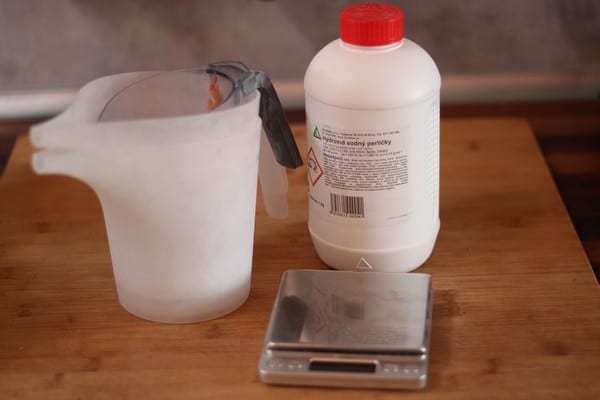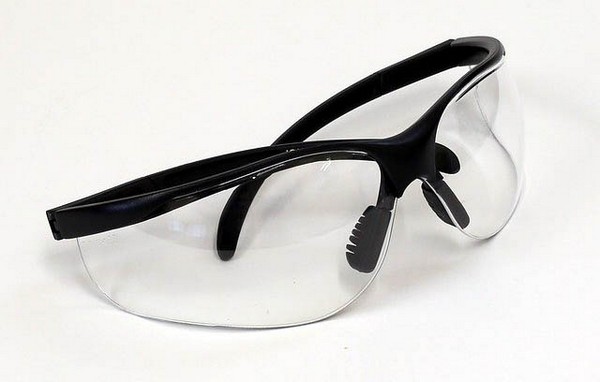Soapmaking is a beautiful thing but it has its risks. We can eliminate these by following a few simple rules of safety in soapmaking.
Soap is made basically from oils and lye, which is – in this case – a solution of distilled water and sodium hydroxide (NaOH). That is a very acidic substance that can seriously harm your eyes and skin. Moreover, at the beginning of the process it releases very hot and acrid vapors. Also, fresh soap is often tested with phenolphtalein, another harmful substance.
Luckily, the rules to follow in order to avoid injuries, are quite simple, we just have to follow them vigorously.

Table of Contents
Clothes
When you make soaps, always wear long sleeve, small neckline and don’t forget to put on gloves. This is how you prevent the lye from getting on your skin.
Goggles and Respirator
Always protect your eyes! Always wear goggles when working with hydroxide. And put on a respirator when mixing it to avoid the vapors also in your nose and mouth.

Working with hydroxide
When you work with sodium hydroxide, always wear all the things indicated above. Moreover, you have to choose an appropriate working space. The best place for mixing the hydroxide into the water is outside or at least at an open window. At first, the lye will become hot and will release acrid vapors, so make a space for them to escape the room.
No children or pets
If you have one or both of these, plan your soap making on a day when they are not with you. At some point you will wish to have three hands and you cannot afford to chase your children or pets away from the dangerous stuff.
Enough time
You cannot make a good soap when you hurry. That’s when you pour the hot oil or the lye on yourself or just do something that destroys your batch. If you don’t have enough time and a quiet space, leave the soapmaking for another day.
ALWAYS follow the safety in soapmaking rules. If you cannot stick to them, make the soap another day. Think of your health and the health of others.
Did you find this article useful? Read also about Testing the Safety of Soaps.